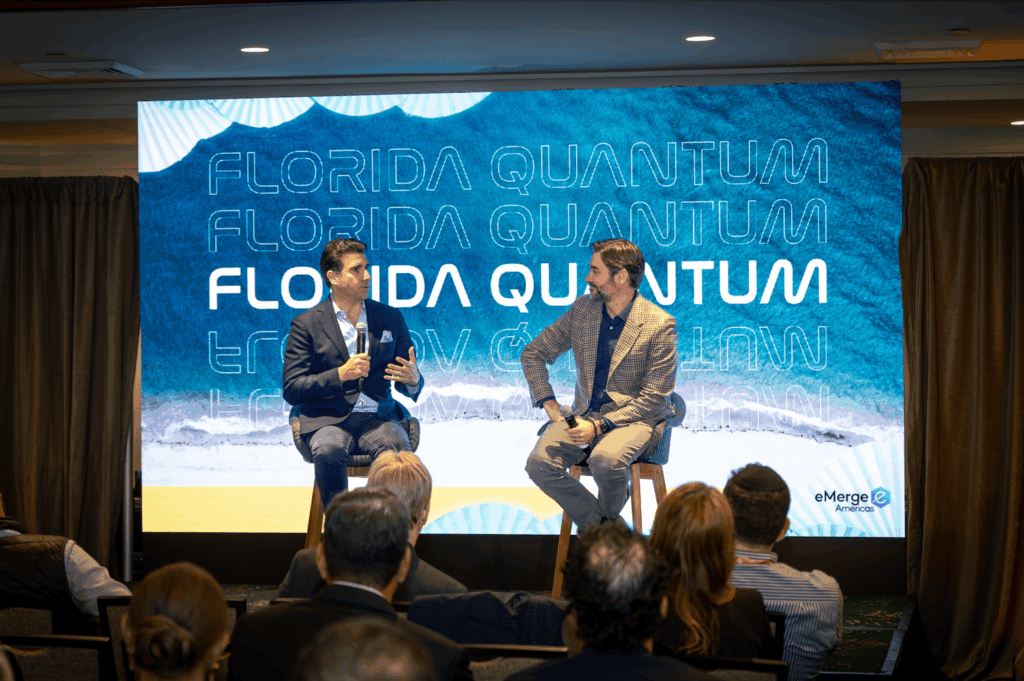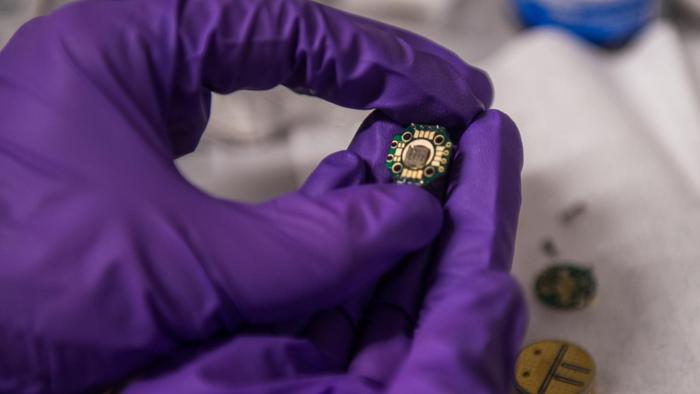Insider Brief
- A new World Economic Forum white paper, produced with Accenture, finds that quantum computing, sensing, and security are moving rapidly from research labs to factory floors, reshaping how manufacturers design products, run operations, and secure global supply chains.
- The report identifies early industrial use cases — from Boeing’s quantum corrosion modeling to Ford Otosan’s hybrid scheduling optimization and the Port of Los Angeles’s logistics simulation — as evidence that quantum systems are already delivering measurable gains in efficiency, precision, and security.
- Analysts warn that companies must act now to prepare for a “quantum imperative,” urging investment in quantum-safe cybersecurity, workforce training, and global standards to avoid falling behind as quantum adoption accelerates.
- Image: Photo by StockSnap on Pixabay
Manufacturers are entering an era where quantum technologies could decide who leads global supply chains and who lags behind, according to a new World Economic Forum (WEF) white paper published in collaboration with Accenture. The recently released report finds that quantum computing, sensing and security are rapidly shifting from research labs to industrial operations, bringing both competitive advantages and — just as urgently — cybersecurity risks.
The study warns that traditional digital systems are nearing their computational and operational limits just as industries are becoming more complex and vulnerable. Citing a 38% rise in global supply chain disruptions in 2024, the report argues that quantum technologies could help industries adapt to volatility, improve precision, and protect critical data from future quantum-enabled attacks.
“The manufacturing and supply chain sector is experiencing its most turbulent period in decades, with disruption now being the norm rather than the exception,” the analysts write, pointing to factors like extreme weather, labor strikes, and cyberattacks.

The WEF defines this transition as the “quantum imperative” — a call for companies to treat quantum technologies not as long-term experiments but as near-term strategic tools.
Quantum: From Lab to Factory and Field
The paper identifies three main areas where quantum systems are already producing measurable value: product design and research, factory operations and supply chain management.
In product development, quantum computers can simulate the behavior of molecules at atomic scales, accelerating material discovery. Boeing, for example, used quantum simulations to study corrosion on lightweight metals, reducing the computational workload by as much as 85%. Moderna has used similar algorithms to model how messenger RNA folds into complex shapes, a key factor in drug design.
These early results signal a shift from theoretical potential to practical impact, according to the report.
In manufacturing environments, quantum systems are beginning to solve complex scheduling, maintenance, and optimization problems that strain classical computers.
Ford Otosan, a Turkish vehicle manufacturer, applied hybrid quantum algorithms to optimize production scheduling for thousands of customizable vehicle variants, cutting scheduling time by half. Semiconductor producers such as TSMC are deploying quantum diamond sensors to detect nanoscale defects in chips, allowing earlier fault detection and higher yield.
Quantum sensors enable real-time, high-precision defect and anomaly detection, the report notes, adding that these devices measure magnetic, thermal and gravitational variations that would otherwise go unnoticed.
The analysts also highlight the growing use of quantum-safe cryptography and communication systems to secure connected factories. NXP Semiconductors and Denso Corporation have begun integrating post-quantum cryptography, or PQC, into vehicle firmware updates, replacing vulnerable encryption systems that could be broken by future quantum computers. The technology allows digital signatures to be verified quickly with minimal memory, ensuring security without slowing production lines.
Quantum Supply Chains Take Shape
Beyond the factory floor, quantum optimization is starting to reshape global logistics.
The Port of Los Angeles used hybrid quantum algorithms to assign trucks and cranes in real time, reducing crane use by 40% and truck wait times by up to two hours. At the Port of Rotterdam, a quantum-secured fiber network using quantum key distribution (QKD) enabled untappable data transmission between control centers, a demonstration of what WEF calls the “quantum-secure supply chain.” The team also cites the U.S. Air Force’s validation of quantum magnetometers — sensors that use magnetic fields for navigation — as a model for future quantum-enabled logistics systems capable of operating without GPS.
In each case, the report ties industrial adoption to concrete outcomes: fewer delays, better asset use, and measurable savings.
“While these capabilities are still in development, they could eventually help minimize delays and reduce operational costs once quantum systems reach commercial maturity,” the analysts write. “The quantum advantage in supply chain operations with many variables and multiple constraints is being realized
today through hybrid quantum-classical algorithms that are improving efficiency, reducing costs and
enhancing resilience.”
Scaling Up: From Exploration to Execution
While most companies remain in early exploration stages, industrial leaders are beginning to scale quantum adoption strategically, according to the report.
The paper offers a roadmap for moving from pilot projects to full deployment. It calls for creating quantum assessment teams, launching hybrid cloud-based pilot programs and building partnerships with universities and technology providers. Executives should assign a C-level sponsor to oversee quantum initiatives, aligning experiments with core business goals and measurable returns.
Because costs of quantum computing is a concern for most organizations, the analysts suggest cloud-based quantum platforms can be a low-risk entry point, allowing firms to test algorithms for logistics, materials design, or scheduling without the cost of owning specialized hardware. These services — often called Quantum-as-a-Service, or QaaS — democratize access to technology once reserved for national laboratories. The study identifies hybrid architectures, where quantum and classical computers work together, as the most realistic near-term path for industrial users.
Security, Standards and Skills
Much of its report is devoted to the policy and organizational groundwork required for a quantum-ready economy — cybersecurity especially.
The study warns that quantum computers capable of breaking today’s public-key encryption — known as cryptographically relevant quantum computers — could emerge within five to 10 years. Migration to quantum-safe systems may take another decade for complex enterprises, the report suggests, leaving a long window of exposure if firms delay. Governments in the United States, China, and the European Union are already mandating or investing in quantum-safe standards.
The report urges industry to follow suit by inventorying existing cryptographic assets and beginning pilot migrations.
Standardization is another hurdle with the absence of global interoperability frameworks potentially slowing adoption and fragment supply chains.
The WEF points to efforts like Germany’s Quantum Technology & Application Consortium (QUTAC) as models for how industries can coordinate early standards and certification frameworks. Without such coordination, industrial firms could face compatibility risks similar to those seen in the early years of industrial networking and cybersecurity.
A shortage of skilled professionals is another major bottleneck, the team writes.
Most engineers lack training in quantum concepts and calls for coordinated workforce initiatives between governments, academia, and industry. It references programs like the Airbus–BMW Quantum Mobility Quest, hosted by The Quantum Insider, as examples of how cross-sector collaborations can build applied quantum talent.
According to the analysts: “Policy-makers and industry leaders must co-develop specialized curricula, fund hands-on training programmes, and support the growth of quantum R&D centres. Additionally, implementing upskilling programmes for existing professionals and fostering a “quantumaware” culture within organizations can ensure broader understanding and adoption of quantum technologies.”
From Caution to Action
While the Forum’s analysis focuses on opportunity, it also underscores the challenges of scaling quantum technologies in production settings.
Hardware remains limited in size and stability, and algorithms need refinement to handle industrial-scale workloads. The authors caution against “inflated expectations” and urge decision-makers to balance experimentation with realistic timelines.
Lessons from earlier technology waves — including artificial intelligence — show that hype can lead to poor investment decisions.
Despite the drawbacks and cautions, companies that fail to plan for quantum integration could find their supply chains and data systems vulnerable in a decade’s time. Early adopters, by contrast, will be positioned to define new industrial standards and secure access to scarce quantum expertise. “The quantum revolution is not a distant possibility,” the report concludes.
“The quantum revolution is not a distant possibility; it is an immediate opportunity that demands
executive attention and strategic action,” the analysts write. “Leaders who act decisively today will define the competitive landscape of tomorrow. Early engagement in standards, policy and talent development will position organizations as leaders, not just adopters, in the quantum economy.”
Read the complete report here.


















